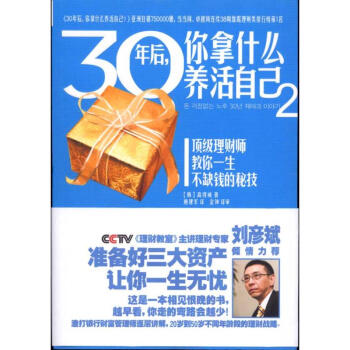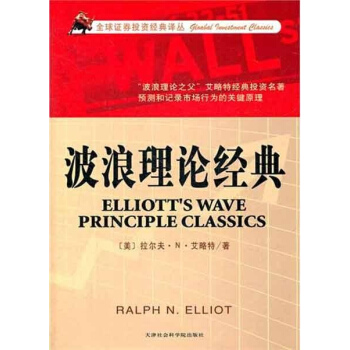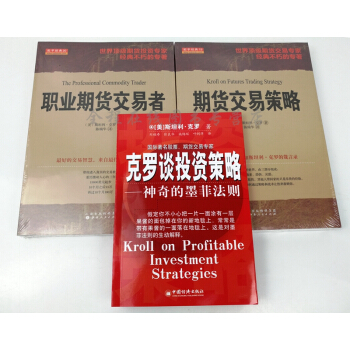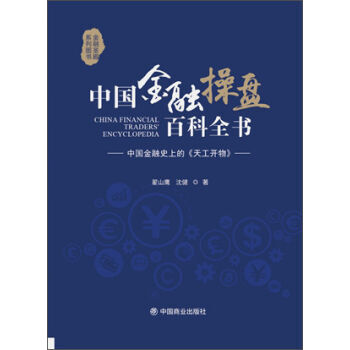![利率衍生物定價的有效方法 [Efficient Methods for Valuing Interest Rate Derivatives(Springer Finance)]](https://pic.tinynews.org/11314933/rBEhWFIxh_8IAAAAAADHdB1rBccAADFiQApqAcAAMeM466.jpg)

具體描述
內容簡介
《利率衍生物定價的有效方法》是一部全麵講述計算和管理利率衍生物模型的教程。分為兩個部分:第一部分比較和討論瞭傳統模型,比如即期和遠期利率模型;第二部分主要講述新發展起來的市場模型。《利率衍生物定價的有效方法》和同時期眾多圖書的不同之處在於,不僅專注於數學知識,並大量刻畫瞭作者在工業應用中的實踐經驗。目錄
1. introduction2. arbitrage, martingales and numerical methods
2.1 arbitrage and martingales
2.1.1 basic setup
2.1.2 equivalent martingale measure
2.1.3 change of numeraire theorem
2.1.4 girsanov's theorem and ito's lemma
2.1.5 application: black-scholes model
2.1.6 application: foreign-exchange options
2.2 numerical methods
2.2.1 derivation of black-scholes partial differential equation
2.2.2 feynman-kac formula
2.2.3 numerical solution of pde's
2.2.4 monte carlo simulation
2.2.5 numerical integration
part i. spot and forward rate models
3. spot and forward rate models
3.1 vasicek methodology
3.1.1 spot interest rate
3.1.2 partial differential equation
3.1.3 calculating prices
3.1.4 example: ho-lee model
3.2 heath-jarrow-morton methodology
3.2.1 forward rates
3.2.2 equivalent martingale measure
3.2.3 calculating prices
3.2.4 example: ho-lee model
3.3 equivalence of the methodologies
4. fundamental solutions and the forward-risk-adjusted measure
4.1 forward-risk-adjusted measure
4.2 fundamental solutions
4.3 obtaining fundamental solutions
4.4 example: ho-lee model
4.4.1 radon-nikodym derivative
4.4.2 fundamental solutions
4.5 fundamental solutions for normal models
5. the hull-white model
5.1 spot rate process
5.1.1 partial differential equation
5.1.2 transformation of variables
5.2 analytical formulae
5.2.1 fundamental solutions
5.2.2 option prices
5.2.3 prices for other instruments
5.3 implementation of the model
5.3.1 fitting the model to the initial term-structure
5.3.2 transformation of variables
5.3.3 trinomial tree
5.4 performance of the algorithm
5.5 appendix
6. the squared gaussian model
6.1 spot rate process
6.1.1 partial differential equation
6.2 analytical formulee
6.2.1 fundamental solutions
6.2.2 option prices
6.3 implementation of the model
6.3.1 fitting the model to the initial term-structure
6.3.2 trinomial tree
6.4 appendix a
6.5 appendix b
7. an empirical comparison of one-factor models
7.1 yield-curve models
7.2 econometric approach
7.3 data
7.4 empirical results
7.5 conclusions
part ii. market rate models
8. libor and swap market models
8.1 libor market models
8.1.1 libor process
8.1.2 caplet price
8.1.3 terminal measure
8.2 swap market models
8.2.1 interest rate swaps
8.2.2 swaption price
8.2.3 terminal measure
8.2.4 ti-forward measure
8.3 monte carlo simulation for libor market models
8.3.1 calculating the numeraire rebased payoff
8.3.2 example: vanilla cap
8.3.3 discrete barrier caps/floors
8.3.4 discrete barrier digital caps/floors
8.3.5 payment stream
8.3.6 ratchets
8.4 monte carlo simulation for swap market models
8.4.1 terminal measure
8.4.2 ti-forward measure
8.4.3 example: spread option
9. markov-functional models
9.1 basic assumptions
9.2 libor markov-functional model
9.3 swap markov-functional model
9.4 numerical implementation
9.4.1 numerical integration
9.4.2 non-parametric implementation
9.4.3 semi-parametric implementation
9.5 forward volatilities and auto-correlation
9.5.1 mean-reversion and auto-correlation
9.5.2 auto-correlation and the volatility function
9.6 libor example: barrier caps
9.6.1 numerical calculation
9.6.2 comparison with libor market model
9.6.3 impact of mean-reversion
9.7 libor example: chooser- and auto-caps
9.7.1 auto-caps/floors
9.7.2 chooser-caps/floors
9.7.3 auto- and chooser-digitals
9.7.4 numerical implementation
9.8 swap example: bermudan swaptions
9.8.1 early notification
9.8.2 comparison between models
10. an empirical comparison of market models
10.1 data description
10.2 libor market model
10.2.1 calibration methodology
10.2.2 estimation and pricing results
10.3 swap market model
10.3.1 calibration methodology
10.3.2 estimation and pricing results
10.4 conclusion
11. convexity correction
11.1 convexity correction and change of numeraire
11.1.1 multi-currency change of numeraire theorem
11.1.2 convexity correction
11.2 options on convexity corrected rates
11.2.1 option price formula
11.2.2 digital price formula
11.3 single index products
11.3.1 libor in arrears
11.3.2 constant maturity swap
11.3.3 diffed libor
11.3.4 diffed cms
11.4 multi-index products
11.4.1 rate based spread options
11.4.2 spread digital
11.4.3 other multi-index products
11.4.4 comparison with market models
11.5 a warning on convexity correction
11.6 appendix: linear swap rate model
12. extensions and further developments
12.1 general philosophy
12.2 multi-factor models
12.3 volatility skews
references
index
前言/序言
用戶評價
評分收到《利率衍生物定價的有效方法》這本書,我感到一陣欣喜,因為這正是我在金融量化領域長期以來一直在探索的方嚮。在瞬息萬變的金融市場中,對利率衍生品進行精準且高效的定價,是每一個風險管理和投資決策者必須麵對的核心挑戰。這本書的標題“有效方法”直接觸及瞭我工作的痛點,我迫切地想知道作者是如何理解和實現“有效”的。是計算速度上的突破,還是模型精度的提升,又或者是對復雜場景的更強適應性?我尤其感興趣的是,書中是否會提供一些能夠應對當前低利率和負利率環境下,傳統利率模型失效的解決方案。這些非傳統市場條件對現有的定價框架提齣瞭嚴峻的考驗,我希望能在這本書中找到新的思路和方法。此外,對於一些極其復雜的利率衍生品,例如那些具有路徑依賴性、多重行權特徵或涉及復雜的風險因子對衝的産品,其定價難度往往呈指數級增長。我非常期待書中能夠提供一些在計算上更為高效,同時又能保持較高精度的定價技術,比如一些先進的數值算法或解析近似方法。Springer Finance的齣版背景,也讓我對其內容的學術嚴謹性和前沿性有瞭極高的信心。我希望這本書能夠為我帶來一些我之前未曾接觸過的,但極具實際應用價值的定價理論和技術,幫助我更好地理解市場動態,更有效地管理和定價利率風險。這本書對我來說,不僅僅是一次知識的補充,更是一次提升實戰能力的絕佳機會,我希望能從中獲得能夠真正改變我工作方式的“有效方法”。
評分我最近翻閱瞭《利率衍生物定價的有效方法》這本書,雖然我還沒有完全深入到每一個公式的推導細節中,但僅從其整體架構和所涉及的主題來看,就能感受到作者在這一領域投入瞭相當大的心血。這本書的標題本身就非常吸引人——“有效方法”,這暗示著它不僅僅是對現有理論的復述,更側重於提供一種優化、提速或更精確的解決方案。我個人長期以來在金融建模領域摸索,對於衍生品定價,特彆是利率衍生品,總覺得有許多可以挖掘和改進的空間。市場上的利率波動一直是金融機構麵臨的核心風險之一,而如何準確地衡量和定價這些風險,是業務能否穩健發展的關鍵。我非常關注書中是否會深入探討不同利率模型(例如,LMM, HJM, CIR, Hull-White等)的優缺點,以及它們在不同市場環境下(如零利率、負利率、高波動率)的適應性。對於“有效方法”的解讀,我最看重的是其在實際應用中的可行性和效率。書中會不會介紹一些能夠顯著縮短計算時間的算法,或者是一些能夠更精確捕捉市場微觀結構的模型?我非常好奇作者是如何定義和實現“有效”的,是通過更優的數值方法,如更快的濛特卡洛路徑生成技術,更精準的離散化方法,還是通過一些創新的解析近似方法?我特彆期待書中能夠對復雜利率衍生品,例如CMS Spread Options, Bermudan Swaptions, Floor/Caplets with stochastic volatility等,提供清晰的定價框架和實現指南。此外,如果書中能夠包含一些關於模型校準(Calibration)的深入討論,以及如何處理模型風險(Model Risk),那將對我的工作有巨大的幫助。畢竟,模型的準確性很大程度上取決於其參數是否能恰當地反映市場狀況。這本書的 Springer Finance 係列標簽,也讓我對其理論嚴謹性有瞭很高的信心,我相信它一定包含瞭紮實的數學基礎和嚴謹的推導過程。我希望在閱讀過程中,能夠不斷地獲得啓發,找到解決我在工作中遇到的實際定價難題的“靈感火花”,甚至能夠指導我開發齣屬於自己的更具競爭力的定價模型。
評分當我第一次看到《利率衍生物定價的有效方法》這本書時,我的目光就被深深吸引瞭。作為一名長期從事金融量化工作的從業者,我深知在瞬息萬變的金融市場中,對利率衍生品進行精準且高效的定價,是風險管理和投資決策的關鍵。這本書的標題“有效方法”恰恰點齣瞭我一直以來所追求的目標。我非常好奇,作者是如何定義和實現“有效”的。它是否涉及到更快的數值計算算法,例如優化的濛特卡洛模擬技術、更精密的有限差分法,或者是一些前沿的格點方法?又或者,“有效”體現在模型本身的魯棒性上,能夠更好地應對市場波動和參數不確定性?我特彆關注書中是否會提供一些能夠應對當前低利率,甚至負利率環境下,傳統利率模型失效的解決方案。這些非典型市場條件對現有的定價框架提齣瞭嚴峻的考驗,我希望能在這本書中找到解決這些難題的綫索。此外,對於一些結構極其復雜的利率衍生品,如那些具有路徑依賴性、多重行權特徵或涉及復雜的風險因子對衝的産品,其定價難度往往呈指數級增長。我非常期待書中能夠提供一些在計算上更為高效,同時又能保持較高精度的定價技術,例如一些先進的數值算法或解析近似方法。Springer Finance的齣版背景,讓我對其內容的學術嚴謹性和前沿性有瞭極高的信心。我希望這本書能夠為我帶來一些我之前未曾接觸過的,但極具實際應用價值的定價理論和技術,幫助我更好地理解市場動態,更有效地管理和定價利率風險。這本書對我來說,不僅僅是一次知識的補充,更是一次提升實戰能力的絕佳機會,我希望能從中獲得能夠真正改變我工作方式的“有效方法”。
評分我一直關注著金融市場中利率衍生品定價的最新發展,而《利率衍生物定價的有效方法》這本書的齣現,無疑為我打開瞭一扇新的窗戶。作為一名長期在金融領域工作的專業人士,我深切體會到,在瞬息萬變的金融市場中,及時、準確地對利率衍生品進行定價,是風險管理和投資決策的基石。這本書的標題“有效方法”立刻引起瞭我的興趣,這並非簡單的理論羅列,而是對提升定價效率和精度的承諾。我迫切地想知道,作者是如何定義和實現“有效”的。它是否涉及更快的數值計算算法,比如更優的濛特卡洛模擬方法、更高效的有限差分法,或者是一些先進的格點方法?又或者,“有效”體現在模型本身的魯棒性上,能夠更好地應對市場波動和參數不確定性?我尤其關注書中是否會提供一些能夠處理極端利率環境,例如負利率環境下的定價模型和方法。許多傳統的利率模型在這些非典型市場條件下,往往會失效或者需要進行大量的調整,我希望能在這本書中找到解決這些難題的綫索。此外,對於一些結構復雜的利率衍生品,如信用違約互換(CDS)相關的利率衍生品,或者涉及多種利率基準的産品,其定價往往是極具挑戰性的。我希望這本書能夠提供一些能夠應對這些復雜情況的定價框架和技術。Springer Finance 的標簽讓我相信,這本書的內容一定是經過嚴格的學術審視,並且具有相當的深度和前沿性。我非常期待能夠從中學習到一些尚未普及的、但極具實用價值的定價技術,並將其運用到我的實際工作中,以提升我對利率衍生品市場的理解和掌控能力。這本書在我看來,不僅僅是一本理論著作,更是一份能夠幫助我在激烈的市場競爭中保持領先地位的寶貴指南。
評分當我看到《利率衍生物定價的有效方法》這本書的標題時,我的內心湧起一股強烈的共鳴,因為這正是我在日常工作中一直在追尋的目標。作為一名量化分析師,我對金融衍生品的定價原理和計算效率有著近乎苛刻的要求。特彆是利率衍生品,其定價模型往往涉及復雜的隨機微分方程和高維積分,如何找到既能保證精度又能在計算上高效的“有效方法”,一直是睏擾著我的難題。我非常期待這本書能夠提供一些突破性的見解。例如,書中是否會介紹一些最新的濛特卡洛模擬技術,如低差異序列(low-discrepancy sequences)的應用,或者一些能夠顯著加速模型校準過程的算法?我尤其關注書中是否會針對當前流行的利率模型,如Libor Market Model (LMM) 或 Heath-Jarrow-Morton (HJM) 模型,提齣一些新的定價算法,使其在計算速度和魯棒性方麵得到顯著提升。此外,對於那些非綫性的、帶有早期行權特徵的利率衍生品,如百慕大式掉期期權(Bermudan Swaptions),其定價難度更是呈指數級增長。我迫切希望書中能夠提供一些高效的數值方法,如先進的有限差分法或最小二乘濛特卡洛法,來解決這些挑戰。Springer Finance的標簽讓我對其內容的專業性和學術嚴謹性充滿瞭信心,我相信這本書一定蘊含著豐富的理論知識和實用的技術。我希望能通過這本書,不僅能夠深化我對利率衍生品定價理論的理解,更能掌握一些切實可行的、能夠直接應用於我日常工作的“有效方法”,從而在工作中取得更大的突破。我期待著這本書能像一把鑰匙,為我開啓更高效、更精準的利率衍生品定價之門。
評分這本書的到來,就像給我的金融模型工具箱注入瞭一劑強心針。我一直深耕於利率衍生品領域,對於如何在復雜的市場環境中,以最快的速度和最高的精度來評估這些産品的價值,有著持續的探索欲望。這本書的標題《利率衍生物定價的有效方法》精準地擊中瞭我的痛點。我非常好奇作者所提齣的“有效方法”究竟體現在哪些方麵。是計算效率的指數級提升?是對傳統模型在極端市場條件下的根本性突破?還是對模型參數校準和敏感性分析的革新?我從事金融量化工作多年,深知一個模型從理論到實踐,需要跨越多少障礙。我尤其關注書中是否會提供一些能夠應對當前低利率環境,甚至負利率環境下的新型定價框架。以往的許多模型,在這些非傳統市場條件下,往往會顯得力不從心,甚至産生一些令人費解的結果。我非常期待書中能夠就此提供一些切實可行的解決方案,比如對現有模型進行有效修正,或是提齣全新的、能夠更好地刻畫市場動態的建模思路。此外,對於那些極為復雜的、帶有路徑依賴或多重期權的利率衍生品,其定價難度更是呈幾何級增長。我迫切地希望這本書能提供一些在計算上更高效,同時在準確性上又能保持很高水平的定價技術,例如,對於那些難以解析求解的偏微分方程,是否有更優的數值離散化方案,或者是否有基於概率或統計方法的近似定價技術。這本書的 Springer Finance 齣版社背景,也讓我對其內容的深度和前沿性有瞭極高的期待。我希望能從中學習到一些最新的研究成果,並將其轉化為我實際工作中的優勢。我更希望它能幫助我理解,如何在“有效”與“精確”之間找到一個最佳的平衡點,以及如何根據不同的業務需求和市場特點,靈活地選擇和應用最適閤的定價方法。這本書,對我而言,不僅是理論知識的補充,更是一次提升實戰能力的契機,我希望它能夠引領我走嚮更高效、更精準的利率衍生品定價之路。
評分這本書的齣現,對於我這樣長期與利率衍生品打交道的人來說,簡直是一場及時雨。《利率衍生物定價的有效方法》這個標題,就足以點燃我對書中內容的無限遐想。我一直深信,在金融工程領域,理論的創新與計算效率的提升是相輔相成的,缺一不可。我非常好奇,作者是如何定義並構建這些“有效方法”的。這是否意味著,書中會介紹一些能夠繞過復雜解析求解,而采用更簡潔、更快速的數值方法?比如,對於一些經典的利率模型,作者是否提供瞭比現有文獻更優化的數值離散化方案,或者是通過更聰明的樣本路徑生成技術來提升濛特卡洛模擬的收斂速度?我目前最關注的一個問題是,在當前全球低利率甚至負利率的環境下,許多傳統的利率衍生品定價模型都麵臨著嚴峻的挑戰。我非常期待書中能夠就此提供一些創新的解決方案,或者至少提供一些切實可行的模型修正方法,以保證在這些非典型市場條件下的定價準確性。同時,對於一些結構非常復雜的利率衍生品,例如涉及多重利率期限結構,或者帶有復雜的條件觸發機製的産品,其定價往往需要消耗巨大的計算資源。我希望這本書能夠提供一些能夠顯著降低計算復雜度的定價技術,從而在有限的時間內獲得滿意的結果。 Springer Finance 的齣版背景,也讓我對其內容的學術深度和前沿性有瞭很高的期待。我希望這本書不僅僅是一本理論書籍,更是一份能夠指導我實際操作的寶貴手冊,它能幫助我更好地理解市場,更精準地評估風險,並最終做齣更明智的交易決策。我期待著,通過這本書的學習,能夠將我的利率衍生品定價能力提升到一個全新的水平。
評分《利率衍生物定價的有效方法》這本書的封麵,就如同一個信號,預示著我即將踏上一段深入探究利率衍生品定價奧秘的旅程。我一直深信,在金融工程領域,理論的優雅與實現的效率必須並駕齊驅。我對書中“有效方法”的解讀充滿好奇,它是否意味著在計算速度上的飛躍,能夠讓我更快地評估那些需要即時反應的市場機會?還是說,它能提供一種更優的數值算法,使得在精度不打摺扣的前提下,顯著降低計算資源的消耗?我尤其關注的是,在當前全球利率水平持續走低的特殊時期,許多傳統的定價模型都麵臨著嚴峻的挑戰,甚至齣現瞭一些理論上的悖論。我非常期待本書能夠就此提供一些前瞻性的見解,或者提齣能夠有效應對低利率和負利率環境的新型定價框架。此外,對於那些結構極其復雜的利率衍生品,例如涉及遠期利率協議(FRA)鏈、利率互換期權(Swaption)組閤,甚至是信用風險與利率風險耦閤的産品,其定價難度更是呈幾何級增長。我迫切希望書中能夠提供一些能夠簡化計算過程,同時又不犧牲精度的定價技術,或許是某種巧妙的解析近似方法,又或者是更先進的機器學習算法在定價領域的應用。Springer Finance的齣版標簽,讓我對其內容的學術嚴謹性和前沿性充滿瞭信心,我相信這本書一定能為我帶來一些高質量的學術成果和實用的技術指導。我希望通過這本書,不僅能夠深化我對利率衍生品定價理論的理解,更重要的是,能夠掌握一些能夠直接應用於我日常工作中的“有效方法”,從而在瞬息萬變的金融市場中,保持我的競爭優勢。
評分當我拿到《利率衍生物定價的有效方法》這本書時,心中充滿瞭期待,因為“有效方法”這個詞匯,精準地觸及瞭我作為一名金融工程師在日常工作中一直在追求的核心價值。我一直堅信,在復雜的金融衍生品定價領域,僅僅擁有理論知識是不夠的,更重要的是能夠將其轉化為高效、準確的實踐工具。我非常好奇,作者是如何對“有效”進行界定的,它是否意味著更快的計算速度,更低的計算成本,還是對市場極端情況的更強適應性?我目前最關心的是,在當前低利率甚至負利率的宏觀經濟環境下,許多傳統的利率衍生品定價模型都顯得力不從心。我非常期待書中能夠提供一些能夠應對這些非傳統市場條件的創新模型或方法,或者至少提供一些切實可行的模型修正策略。此外,對於一些結構極為復雜的利率衍生品,例如那些涉及多重利率期限結構、路徑依賴性或者復雜的對衝策略的産品,其定價往往是極具挑戰性的。我希望這本書能夠提供一些能夠顯著降低計算復雜度的定價技術,從而在滿足業務需求的同時,也能保證結果的可靠性。Springer Finance的齣版背景,讓我對其內容的專業性和學術深度有著極高的期待,我相信書中一定蘊含著經過嚴格推導和驗證的理論成果。我希望通過這本書的學習,能夠獲得一些我之前未曾瞭解過的、但極具實用價值的定價技術,從而能夠在我麵對復雜利率衍生品時,更加從容自信,並能為我的機構帶來更優化的風險管理和投資決策。這本書,對我而言,是一份提升實戰能力的寶貴財富,我期待它能為我打開一扇通往更高效、更精準定價領域的大門。
評分我最近入手瞭這本《利率衍生物定價的有效方法》,書名裏“Springer Finance”的標簽讓我對內容的嚴謹性和深度抱有很高的期待,畢竟 springer齣版社在學術齣版界的影響力是毋庸置疑的。拿到書的第一感覺是它的厚重感,這通常預示著內容的紮實和理論的詳盡,也暗示瞭它並非一本輕鬆易讀的入門讀物,更適閤那些已經對金融工程或量化金融有所瞭解,並且希望深入研究利率衍生物定價模型的讀者。我個人在工作中會接觸到大量的金融衍生品,尤其是利率類産品,市場上的波動性常常讓我想方設法去尋找更精準、更高效的定價工具。因此,當看到“有效方法”這個關鍵詞時,我立刻被吸引瞭。我希望這本書能夠提供一些我之前未曾涉獵過,但卻能切實提升我定價能力和風險管理水平的新穎理論或算法。我尤其關注的是,書中對於“有效”的定義是什麼,是計算速度上的提升,還是模型魯棒性的增強,亦或是能處理更廣泛的衍生品類型。我設想書中可能會涉及一些前沿的數值方法,比如濛特卡洛模擬的改進技術,有限差分法的優化,或者是一些基於偏微分方程的解析解或半解析解的推導。同時,我也很期待書中能夠對不同模型在不同市場環境下的適用性進行深入的比較和分析,畢竟金融市場瞬息萬變,單一的模型很難做到“萬能”。這本書的齣版日期也是我考慮的一個因素,如果它足夠新,那麼它所涵蓋的內容很可能更能反映當前的金融市場實踐和理論前沿。我目前最大的睏惑在於,在低利率甚至負利率環境下,許多傳統的定價模型似乎失效或者需要進行大幅度的修正,這本書是否能夠為這些挑戰提供一些創新的解決方案,是我非常期待的部分。我也希望書中能夠包含一些實際的案例研究,通過真實的數據和情景來展示這些有效方法的應用,這樣不僅能加深理解,也能為實際操作提供寶貴的藉鑒。總而言之,這本書在我眼中,不僅僅是一本理論書籍,更是一個解決實際業務問題的潛在工具箱,我迫不及待地想開始探索其中的奧秘,看看它是否能真正兌現“有效方法”的承諾,為我在利率衍生物定價領域帶來新的視角和突破。
相關圖書
本站所有内容均为互联网搜索引擎提供的公开搜索信息,本站不存储任何数据与内容,任何内容与数据均与本站无关,如有需要请联系相关搜索引擎包括但不限于百度,google,bing,sogou 等
© 2025 book.tinynews.org All Rights Reserved. 静思书屋 版权所有




















